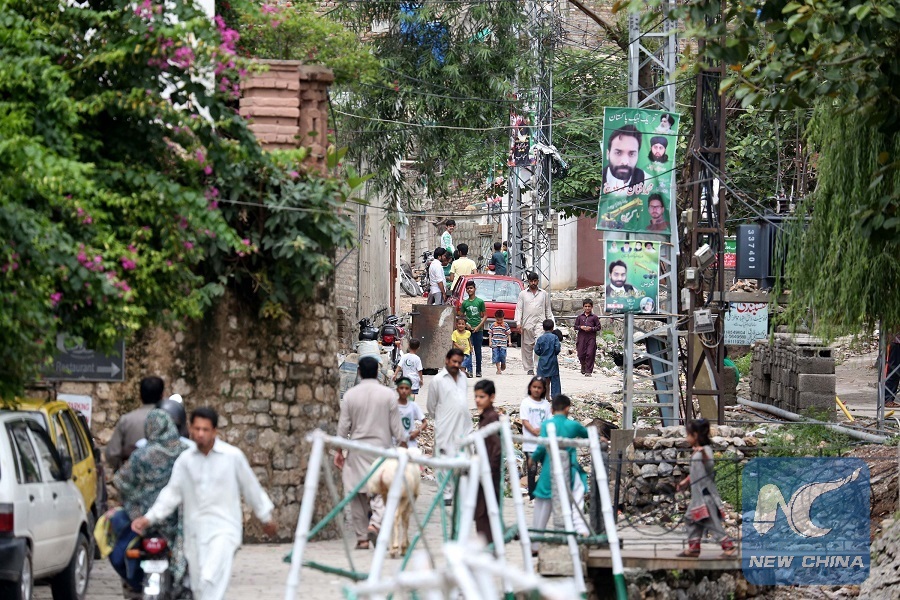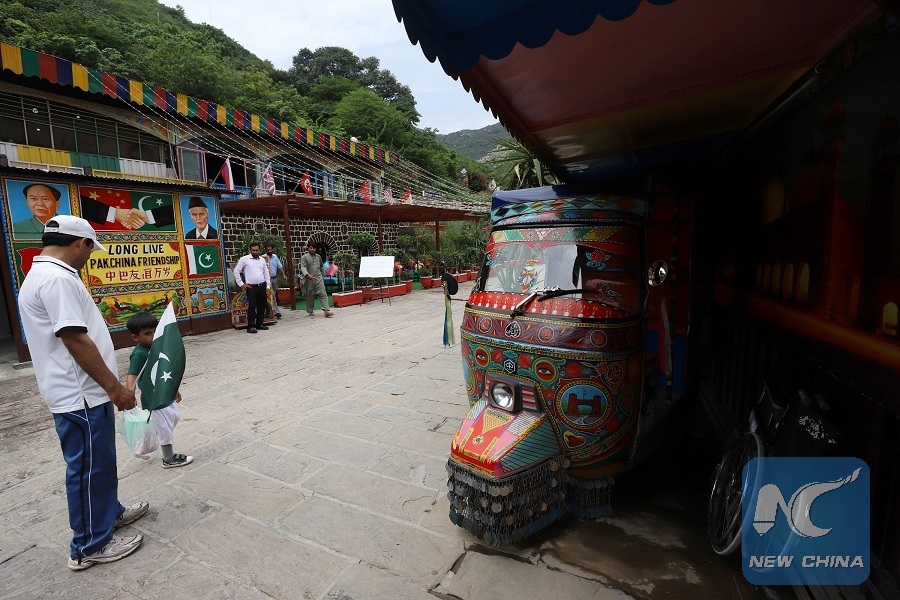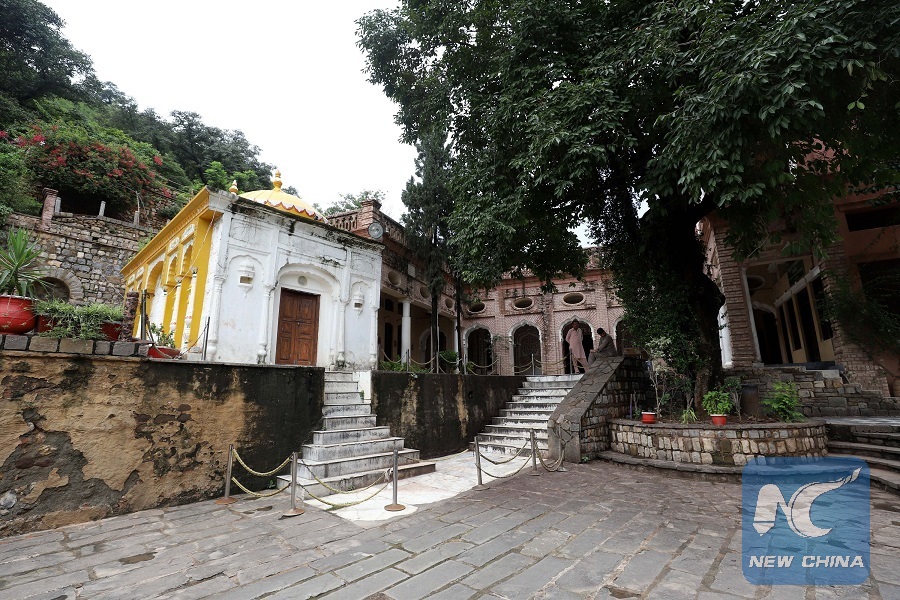
Photo taken on Aug. 14, 2018 shows people visit the Saidpur village in Islamabad, capital of Pakistan. (Xinhua/Ahmad Kamal)
by Misbah Saba Malik
ISLAMABAD, Aug. 14 (Xinhua) -- Hafeez Ahmad, 32, serves as a watchman to buildings dating back more than 200 years in the scenic Saidpur Village, located in the heart of Pakistani's capital city of Islamabad.
As a resident of the village, Ahmad said that hundreds of tourists visit the village everyday to enjoy a wide and varied spectrum of quaint buildings showcasing ancient civilizations.
Paraphrasing what he heard from his parents and grandparents, Ahmad said the village had been named after Sultan Said Khan, son of Sultan (king) Sarang Khan who was the owner of the village in the 16th century. Sultan Sarang Khan was ruler of a vast area in the present-day Punjab province of Pakistan, but he loved Saidpur the most due to its scenic beauty.
"The king later gifted it to his daughter who tied the knot with a famous King of the Mughal era, as dowry," Ahmad said.

Photo taken on Aug. 14, 2018 shows people visit the Saidpur village in Islamabad, capital of Pakistan. (Xinhua/Ahmad Kamal)
In 2006, the Saidpur Village was remodeled as an "Arts and Craft Village" by the Capital Development Authority (CDA) of Islamabad with an aim to preserve its centuries-old cultural heritage and promote tourism in the area, while allowing visitors to have a glance at rural life of Pakistan in the lap of the hustle and bustle of the capital city.
The CDA's records show that the authority spent more than 400 million rupees (3.26 million U.S. dollars) to re-do its historical buildings and give a facelift to the old-fashioned mud houses of the residents. The village's water stream was also cleaned up and some high-end restaurants were also opened there to provide good quality local food for both local and foreign tourists.
Khaleeq-uz-Zaman, 75, who claims to be the descendant of Sultan Said Khan, said that ever since the government remodeled the village, the number of local and foreign visitors to the place has increased manifold. "Earlier, visitors came here once in a blue moon, but since its remodeling, people keep on flocking here."
Before the partition of Pakistan and India in 1947, Hindus, Sikhs and Muslims used to live together in the village, but Hindus and Sikhs migrated to India after the partition and their traces were gradually removed by the locals, Zaman said, adding that there used to be a number of small shrines where Hindus and Sikhs used to pray, but now there is only one Hindu shrine and another Sikh shrine in the village, for the sake of sight-seeing.

Photo taken on Aug. 14, 2018 shows the view of a Hindu temple in Saidpur village in Islamabad, capital of Pakistan. (Xinhua/Ahmad Kamal)
Sitting on a traditional charpoy, a hand-woven bed at a restaurant next to his home in the village, Zaman told Xinhua that he vividly remembered playing in the streets with his Hindu and Sikh friends when he was a small kid.
"At that time there was no concept of hatred on the basis of religious difference. We used to live like brothers and sisters. When Hindus were leaving for India at the time of partition, they visited our homes and gave us beautiful plates and other items as gifts. My parents kept them for years."
Located about 7 km away from the county's parliament in Islamabad, the village also has a two-story building next to the Sikh shrine and Hindu temple. Zaman said the building was once a school run by Hindu spiritual leaders for orphaned children.
Lying at the foot of the scenic Margalla hills, the village is now an excursion point for local and foreign visitors who make their way to the village to witness the stark contrast between city and village life.
Benhua J., a tourist from Colombia, visited Pakistan for the first time and unlike the news he heard about terrorism in Pakistan, he felt very safe and there was nothing regarding security issues that could "frighten" him.
The young man said that he could not help being impressed by the beauty of Saidpur Village. He said he liked the decorative elements in the old historic buildings, which according to rough estimates, are more than 200 years old.
"It is very beautiful, it looks like the mountain is the part of the whole scenery, and the village looks like a jewel in the shell (of the mountain)."
Zaman said that foreigners keep on visiting the village and were greatly impressed by the ambiance here. "There is hardly any ambassador posted here in Islamabad who hasn't visited and dined here."
Historians believe that the village's architecture shows the fading footprints of four civilizations including Gandhara, Ashoka, Mughal and Greek, making it an ideal destination for visitors interested in finding traces of fading history in ancient buildings.

